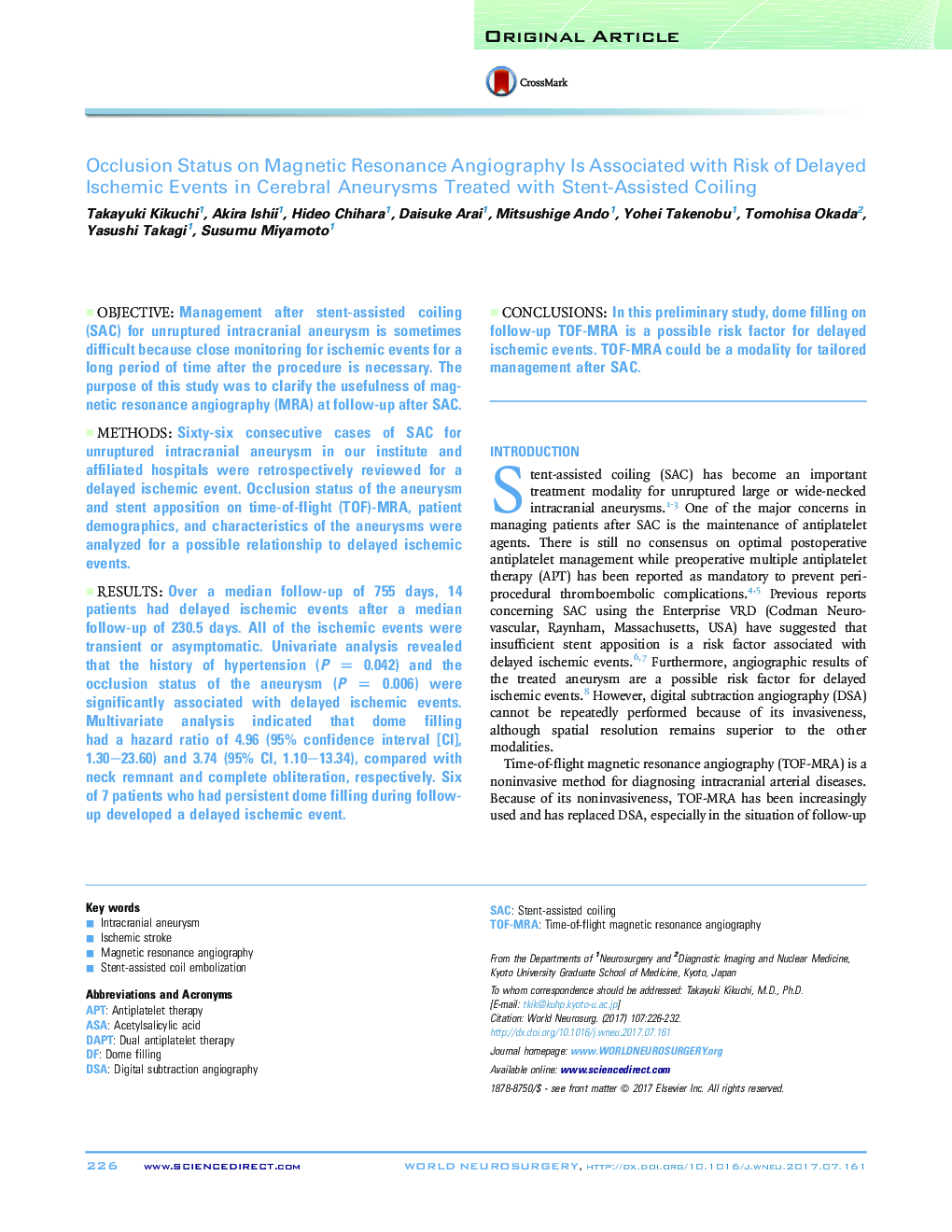| Article ID | Journal | Published Year | Pages | File Type |
|---|---|---|---|---|
| 5633877 | World Neurosurgery | 2017 | 7 Pages |
ObjectiveManagement after stent-assisted coiling (SAC) for unruptured intracranial aneurysm is sometimes difficult because close monitoring for ischemic events for a long period of time after the procedure is necessary. The purpose of this study was to clarify the usefulness of magnetic resonance angiography (MRA) at follow-up after SAC.MethodsSixty-six consecutive cases of SAC for unruptured intracranial aneurysm in our institute and affiliated hospitals were retrospectively reviewed for a delayed ischemic event. Occlusion status of the aneurysm and stent apposition on time-of-flight (TOF)-MRA, patient demographics, and characteristics of the aneurysms were analyzed for a possible relationship to delayed ischemic events.ResultsOver a median follow-up of 755 days, 14 patients had delayed ischemic events after a median follow-up of 230.5 days. All of the ischemic events were transient or asymptomatic. Univariate analysis revealed that the history of hypertension (P = 0.042) and the occlusion status of the aneurysm (P = 0.006) were significantly associated with delayed ischemic events. Multivariate analysis indicated that dome filling had a hazard ratio of 4.96 (95% confidence interval [CI], 1.30-23.60) and 3.74 (95% CI, 1.10-13.34), compared with neck remnant and complete obliteration, respectively. Six of 7 patients who had persistent dome filling during follow-up developed a delayed ischemic event.ConclusionsIn this preliminary study, dome filling on follow-up TOF-MRA is a possible risk factor for delayed ischemic events. TOF-MRA could be a modality for tailored management after SAC.
